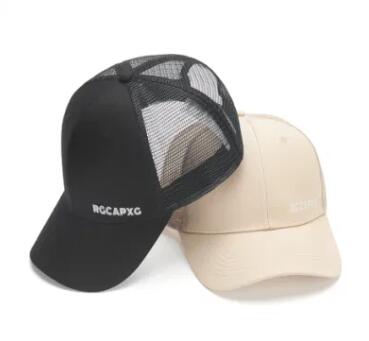The Eco-Game: Exploring the Environmental Impact of Sports Cap Production and Materials
2024-02-22
In the world of sports and athletics, the humble sports cap plays a significant role, providing athletes and enthusiasts alike with comfort, style, and functionality. However, behind the scenes of sports cap production lie environmental considerations that merit attention. In this blog post, we'll delve into the environmental impact of sports cap production and materials, examining key factors that contribute to sustainability or environmental harm.
1. Material Selection:
The choice of materials for sports cap production plays a pivotal role in determining its environmental footprint. Traditional materials like virgin polyester and nylon may offer durability and performance, but they often come with a high environmental cost due to their reliance on fossil fuels, energy-intensive manufacturing processes, and non-biodegradable nature. Opting for eco-friendly alternatives such as recycled polyester (rPET), organic cotton, or sustainable bamboo can help reduce the environmental impact of sports cap production by minimizing resource extraction, energy consumption, and waste generation.
2. Manufacturing Processes:
The manufacturing processes involved in sports cap production can have significant environmental implications. Energy-intensive operations like dyeing, printing, and finishing contribute to greenhouse gas emissions, water pollution, and waste generation. Employing eco-friendly manufacturing practices such as waterless dyeing, digital printing, and renewable energy sources can help mitigate these environmental impacts by reducing water consumption, chemical use, and carbon emissions associated with cap production.
3. Packaging and Distribution:
Packaging and distribution are key stages in the lifecycle of sports caps that can contribute to environmental degradation. Excessive packaging materials, single-use plastics, and long-distance transportation all add to carbon emissions, resource depletion, and waste accumulation. Implementing sustainable packaging solutions such as recycled cardboard boxes, biodegradable packaging materials, and localized production and distribution networks can minimize the environmental footprint of sports cap packaging and transportation.
4. End-of-Life Considerations:
The disposal of sports caps at the end of their lifecycle poses environmental challenges, especially when made from non-biodegradable materials like polyester and nylon. These materials can persist in the environment for centuries, contributing to plastic pollution in landfills, waterways, and oceans. Designing sports caps for circularity by incorporating recyclable or biodegradable materials and promoting take-back and recycling programs can help close the loop and reduce the environmental impact of cap disposal.
5. Consumer Awareness and Behavior:
Consumer awareness and behavior play a crucial role in driving sustainability in sports cap production and consumption. Educating consumers about the environmental impact of different materials and production processes can empower them to make informed purchasing decisions and choose eco-friendly alternatives. Encouraging responsible consumption habits such as repairing, reusing, and recycling sports caps can further minimize waste and promote sustainable practices among athletes and enthusiasts.
Conclusion: A Sustainable Scorecard
In conclusion, the environmental impact of sports cap production and materials encompasses a range of factors, from material selection and manufacturing processes to packaging, distribution, and end-of-life considerations. By prioritizing sustainability throughout the supply chain and product lifecycle, stakeholders in the sports industry can minimize resource consumption, reduce pollution, and mitigate the ecological footprint of sports cap production. Together, through innovation, collaboration, and consumer engagement, we can strive for a more sustainable future where sports caps play a winning role in protecting both athletes and the planet.



